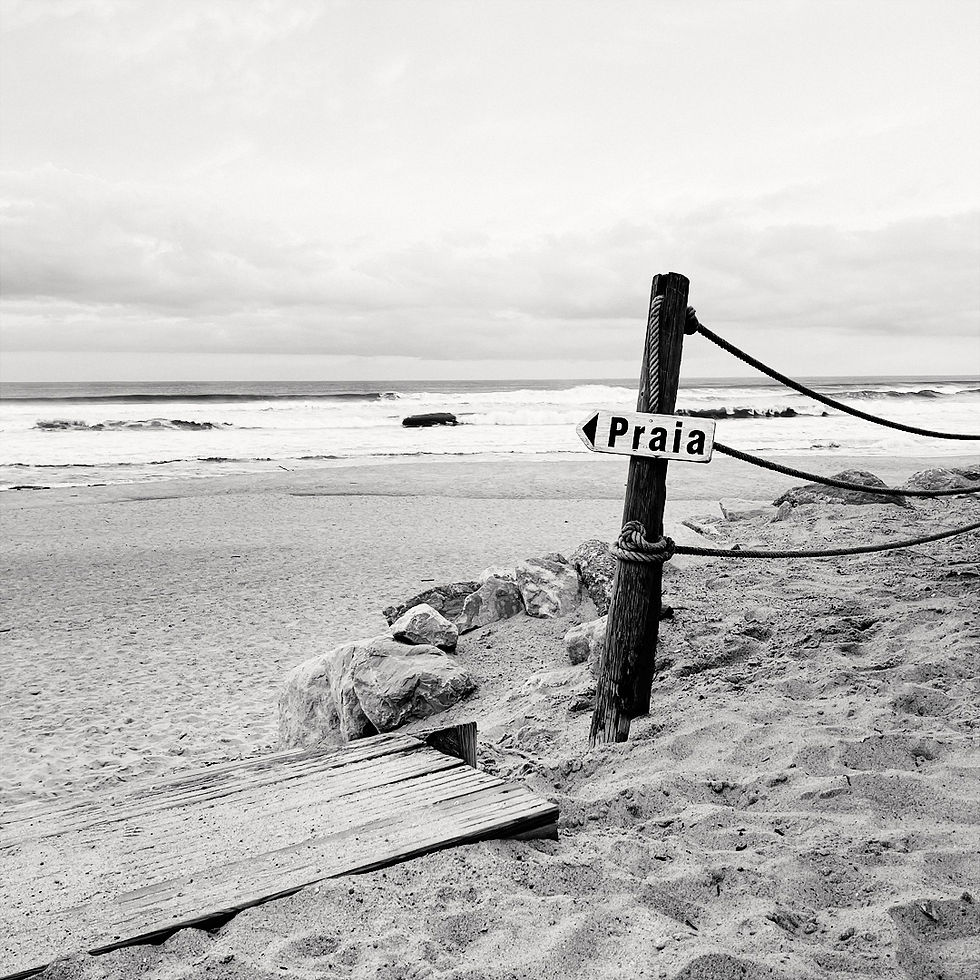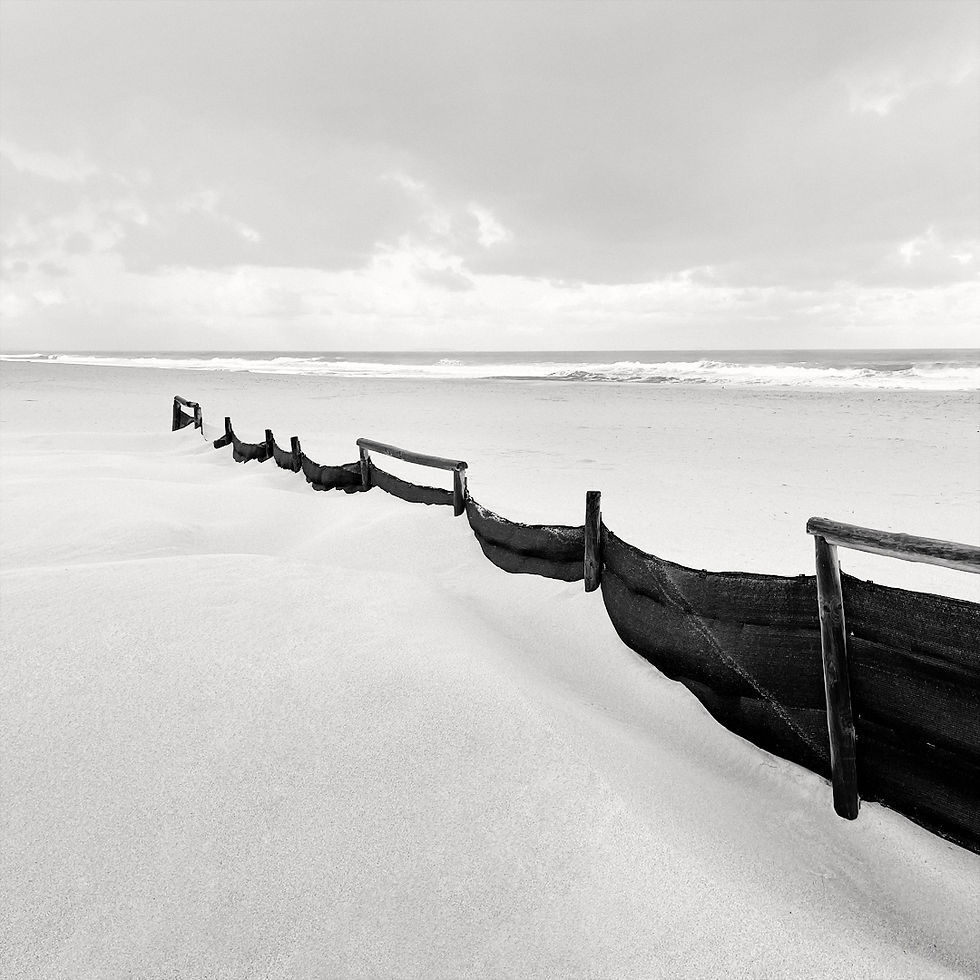Portugal: Foz do Arelho, Capturing the Serenity of the Silver Coast
- Olivier

- Apr 4, 2023
- 7 min read
Updated: Aug 7, 2025
Foz do Arelho is a charming coastal town located on the Silver Coast in Portugal. Known for its picturesque beach, it offers a unique contrast between the Atlantic Ocean and the tranquil Óbidos Lagoon. The area is renowned for its natural beauty and stunning landscapes. Foz do Arelho has all the ingredients of an interesting destination for photography.

© O.Robert
What is the Silver Coast
The Silver Coast, or "Costa de Prata" in Portuguese, is a picturesque coastal region located in central Portugal. Stretching for about 150 kilometers, it begins on the northern outskirts of Lisbon and continues up to the city of Porto, although the exact boundaries may vary according to interpretations.
The name "Silver Coast" is derived from the shimmering reflection of the sun on the Atlantic Ocean, creating a mesmerizing silver glow that captivates visitors. The sun's rays dance on the ocean's surface, creating a silvery sheen that is particularly breathtaking during sunrise and sunset. This natural phenomenon has inspired poets, artists, and photographers for centuries, making it a beloved destination for those seeking tranquility and inspiration.
This region is renowned for its extensive beaches and magnificent landscapes, combining the natural beauty of the Atlantic Ocean with the surrounding forests. The beaches, often lined with high sand dunes and imposing cliffs, are a paradise for water sports enthusiasts, especially surfers and windsurfers, thanks to the impressive waves and strong winds characteristic of this coast.

© O.Robert
The Silver Coast is also rich in cultural heritage. Towns like Nazaré, famous for its gigantic waves and fishing traditions, and Óbidos, known for its well-preserved medieval village and fortified walls, are major points of interest.
This region harmoniously combines natural beauty, cultural and historical richness, and outdoor activities, making it a popular tourist destination for vacationers as well as photographers and nature lovers.
For a photographer specializing in minimalist landscape photography, the Silver Coast is a dream come true. The stark contrast between the silver ocean and the rugged coastline creates a perfect canvas for capturing the essence of nature. The historic towns, with their ancient architecture and timeless charm, offer endless opportunities for capturing the beauty of the past.
The Magic of Foz do Arelho
Foz do Arelho is a quaint small town located on the Silver Coast, near the city of Caldas da Rainha. This locality is particularly known for its unique beach that stretches along the Atlantic and also borders the Óbidos Lagoon, a large saltwater lagoon. Read my article on the Óbidos Lagoon.
Foz do Arelho has managed to preserve its authentic character despite the rise of tourism. It's a place where time seems to have stopped, thus creating an ideal backdrop for minimalist photography. Its beach offers a fascinating contrast between the often vigorous Atlantic Ocean and the calm, safe waters of the lagoon. This duality makes Foz do Arelho a favored destination for a wide variety of visitors, from families to extreme sports enthusiasts.

© O. Robert
The surrounding area is also famous for its natural beauty, with picturesque landscapes and protected areas suitable for hiking, biking, and bird watching. The salt marshes and wetlands around the lagoon provide a rich habitat for a variety of wildlife species.
In addition to its natural attractions, Foz do Arelho has a small but charming urban area with restaurants, bars, and cafes, where visitors can enjoy local dishes, especially fresh seafood. The town's architecture reflects a mix of traditional and contemporary influences, contributing to its welcoming and relaxed ambiance.
Brief History of Foz do Arelho
Historically, Foz do Arelho was a simple fishing village, with an economy and lifestyle closely tied to the sea and the Óbidos Lagoon. Fishing and salt harvesting were the main economic activities.
Over time, the village gained popularity as a holiday destination, especially among the Portuguese elite at the end of the 19th and the beginning of the 20th century. This popularity was enhanced by the therapeutic qualities attributed to the waters of the lagoon, attracting people in search of health cures.

© O. Robert
In the 20th century, Foz do Arelho began to transform into a more developed tourist destination, with the construction of residences, hotels, and other infrastructure to accommodate visitors. Despite this evolution, the town has retained much of its traditional charm and peaceful ambiance.
Today, Foz do Arelho harmoniously blends its historical heritage with its role as a modern tourist destination, offering visitors an experience rich in culture, natural beauty, and history.
The Beach of Foz do Arelho
The beach at Foz do Arelho is another ideal subject for your photography. The vast expanses of fine sand and gently rolling dunes offer a perfect blank canvas for creating images that exude calmness and timelessness. The shades of gray you can capture in the sand, combined with the contrast of the Atlantic Ocean, create clean compositions that convey the simplicity of this place.
The beach of Foz do Arelho is particularly remarkable for its size and its unique position at the junction of the Atlantic Ocean and the Óbidos Lagoon.
It stretches a considerable length along the coast, providing a vast space of fine sand. The exact length can vary depending on natural conditions and tides, but it generally offers enough space to accommodate both busier areas and quieter sections for those seeking solitude.

© O. Robert
The relationship between Foz do Arelho beach and the Óbidos Lagoon is one of the most interesting aspects of this destination. The lagoon, which is the largest coastal lagoon in Portugal, flows into the Atlantic Ocean at Foz do Arelho. This configuration creates a fascinating natural environment where the fresh water of the lagoon meets the salty ocean water.
As a result, the beach presents two distinct environments. On one side, the Atlantic Ocean with its stronger waves and deeper waters, ideal for surfing and other water sports, and on the other, the calm and shallow waters of the lagoon, perfect for safe swimming, and activities such as paddleboarding, kayaking, or sailing.
This natural duality makes Foz do Arelho beach an attractive place for a wide variety of visitors, offering both the excitement of the ocean and the tranquility of the lagoon.
Local Architecture: Between Tradition and Modernity
Foz do Arelho also features interesting architecture, blending traditional Portuguese houses with modern designs. The architecture of the Foz do Arelho region and the Silver Coast is characterized by several distinctive elements, reflecting the influence of Portuguese culture and local environmental conditions.

© O. Robert
Traditional materials include local stone and limestone, widely used in the construction of foundations, walls, and frames. Limestone, in particular, is valued for its durability and ability to withstand maritime weather conditions. White stucco is also commonly used for facades, offering effective reflection of sunlight and helping to keep interiors cool. The roofs are often covered with terracotta tiles, a traditional material in Portugal, known for its resistance to heat and water.
The typical colors of the buildings are influenced by the natural materials used. Whitewashed facades are very common, often contrasted by blue or yellow accents around windows and doors, a practice that adds vibrant character to the constructions.
The roofs are typically sloped, suitable for rain and offering a traditional aesthetic aspect. Terraces and balconies are also common elements, taking advantage of the orientation towards the sun and the sea breeze, and providing outdoor living spaces.
The traditional architecture emphasizes simple lines and functional aesthetics. Houses are often designed with large windows and doors to maximize natural light and ventilation. These buildings reflect a fusion of cultural influences, including Moorish and Mediterranean, which are evident in details such as arches, decorative ceramic tiles (azulejos), and ornamental patterns.
This architecture is a blend of functionality adapted to the local climate, aesthetic simplicity, and varied cultural influences, making it a charming and integral aspect of the Silver Coast region.

© O. Robert
Capturing the Soul of Foz do Arelho
Foz do Arelho, with its unique natural landscapes and tranquility, offers fertile ground for minimalist photography. The juxtaposition of the calm lagoon and the more turbulent Atlantic Ocean creates striking natural contrasts. These elements can be used to create minimalist compositions that highlight the duality of nature.
The vast expanses of sand, dunes, and open horizons offer clean lines and simple shapes. These elements, perfectly suited to a minimalist style, produce soothing and balanced images.

© O. Robert
For color enthusiasts, Foz do Arelho beach has a palette of natural and soft colors, from the deep blues of the ocean to the lighter hues of the lagoon and sand. These colors can be easily used to create aesthetic, subtle, and soothing images.
The natural light, especially at sunrise and sunset, transforms the landscape into a canvas of textures and shadows. These lighting conditions offer opportunities for effective minimalist compositions. The calm waters of the lagoon allow for the creation of symmetrical and powerful images by playing with constructed elements.
Finally, the presence of isolated elements, such as solitary boats, old mooring posts, drifting fishing nets, or abandoned buoys, enhances the feeling of solitude and timelessness, focusing on the essence of the object.











